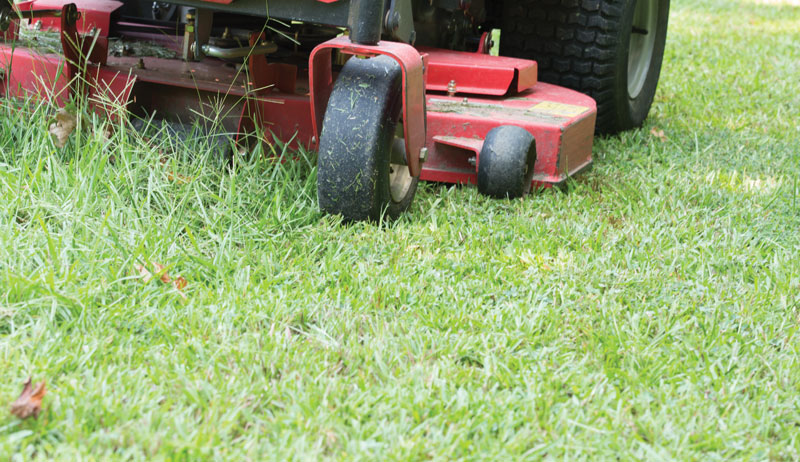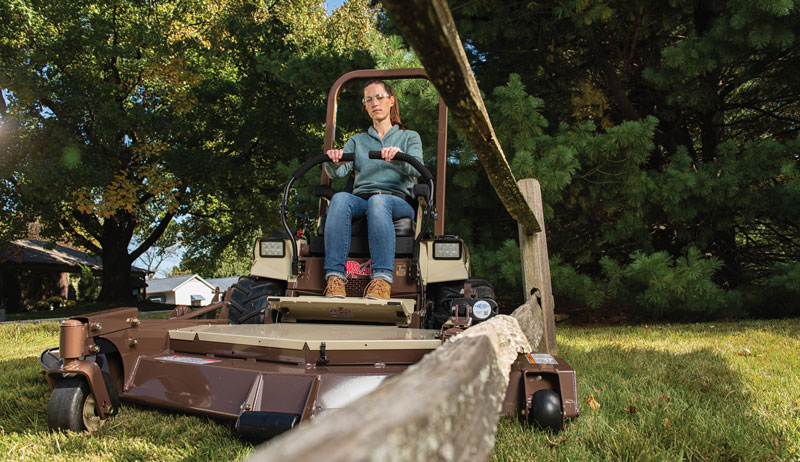
Lawn mowing comes naturally to some people, while others just can’t cut it. You don’t need a green thumb to have the perfect lawn, but you do need to know the proper mowing techniques.
1. Choose the Best Mower for Your Yard Size
Lawn mowers come in a “grass” of their own. Riding mowers are best for larger yards, but they don’t come cheap. Consumer Reports prices the average riding mower at $2,000 to $5,000. That’s not exactly chicken feed.
If you have more than an acre to mow, however, it’s well worth the cost and you’ll be saving a lot of time.
Push mowers are actually the better choice for smaller lawns. They’re easier to turn and maneuver around trees and corners. If your yard is sloped or has a number of tight spaces, a smaller push mower is the way to go.
Push mowers will also save you a lot of green. The average one costs about $420.
If you want to work off some pounds, an old-fashioned push reel mower only costs about $75. A Harvard University study estimates the average person burns about 350 calories an hour using a reel mower.
A gas or electric push mower only burns about 280 calories an hour.
2. Mower Maintenance Is Critical
Before you start your engine, make sure your mower is in good shape. Dull mower blades can harm your lawn by tearing the grass blades and leaving it vulnerable to disease and fungi.
“You’ll know your mower blade is dull within two days after mowing your lawn,” says University of Illinois extension agent Richard Hentschel. “Shredded grass turns brown and strawlike. The shredded blades can’t heal, inviting disease to invade the plants.”
A clean cut is better for the lawn and encourages the grass to grow back thicker and healthier. Hentschel points out that sharper blades speed up the mowing and are better for the mower engine.
You can buy a mower blade sharpening kit for about $10 or take your mower to a maintenance shop where they can clean it, sharpen your blades and change the spark plugs.
Proper mower maintenance should be done every year.
Read more: Does your lawn mower need new blades? Here’s how to check (and what to do).
3. Check the Lawn for Dangerous Items Before Mowing
Now that you’ve got your mower in tip-top shape, the last thing you want to do is run over a large stick or rocks. More than 6,000 people are injured every year in lawn mower accidents. More than half of those injuries are due to flying projectiles.
Those flying rocks and toys can also break your windows and damage your mower blades. 
4. Where to Start Mowing Your Lawn
It’s best to start by mowing around the perimeter of your yard. Take two passes around the edges, which will make the job go faster.
Next, hit the slopes. The uneven parts of your yard are the toughest, so it’s best to tackle them first. If using a riding mower, you want to position the mower horizontally to avoid tipping over. It’s best to position a push mower parallel to the contour of the slope.
Avoid mowing too close to trees, flowerbeds and playground equipment. You can always go back with a line trimmer later.
5. Don’t Cut Too Short!
Yes, cutting your lawn short means you can cut it less often. But you don’t want to give your lawn a mow-hawk.
The rule of thumb is to only remove one-third of your grass in one mow. Even if you’ve neglected your lawn and let it grow too long, taking any more than one-third off the top at a time will stress the blades.
The exact best height of your grass depends on the grass type.
6. Leave the Leaves &
Grass Clippings
Don’t waste your time raking and bagging those leaves and grass clippings. Today’s mowers will mulch the leaves and clippings, which is better for your lawn. The nutrients from the clippings return nitrogen to the soil and help control weeds naturally.
You’ll save yourself some work. And you’ll save the environment by keeping the yard waste out of the landfill and not having to use fertilizer.
7. Get the Creative Juices Growing
Nothing says you have to mow in a straight line. By attaching a lawn roller, you can stripe or mow a checkerboard pattern into your lawn. Give your yard an athletic-field look or fancy design by letting the grass grow a little bit longer and use the turf as your canvas.
Even if you’re not looking to create an artistic masterpiece, vary the direction with each mow. That way, you don’t wear grooves in your yard, and you force the blades to reach up toward the sun instead of bending.
Read more: Not into lawn mowing? Here’s how you can ditch the grass and plant a garden instead.
8. When Is Best Time to Mow?
You want to avoid the heat of the day, without annoying your neighbors. Mowing after 10 a.m. ensures the dew on the grass will have evaporated.
Mowing too early while the ground is wet could tear the grass blades. And mowing when it’s too hot could stress the grass. 
9. Safety Matters
Lawn mowing is not child’s play. You’re working with a powerful piece of machinery with sharp blades. More than half the injuries we talked about earlier involve young children, so keep kids and pets inside while you mow.
Also, make sure you’re wearing close-toed shoes.
10. Consider Alternatives (Like Goats!)
Don’t mow yourself in a corner. You don’t have to use a machine to trim your lawn.
Consider “hiring” a four-legged team to nosh on your grass. A herd of goats can get the job done slowly. Spanish goats make excellent foragers. Sheep can also help you control weeds. You just have to be careful the animals don’t have access to toxic weeds.
This article originally appeared in the May/June 2021 issue of Hobby Farms magazine.





